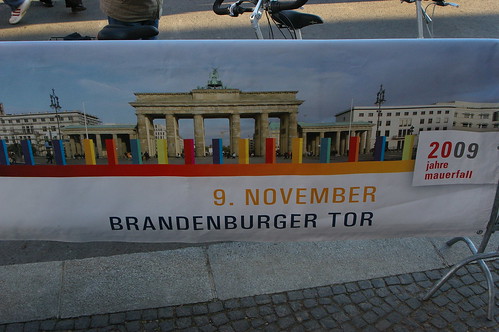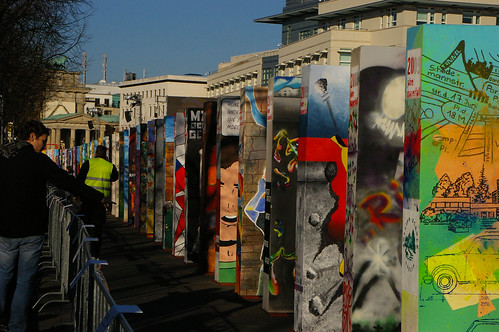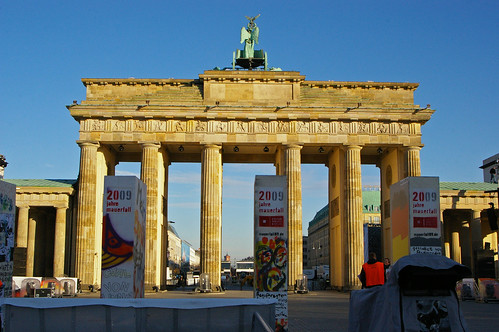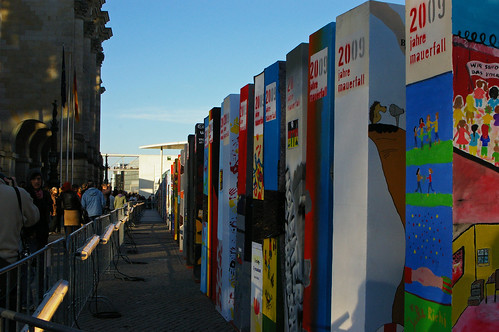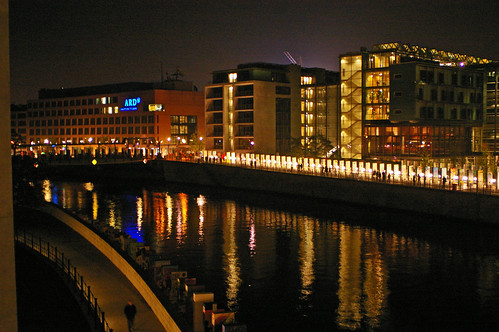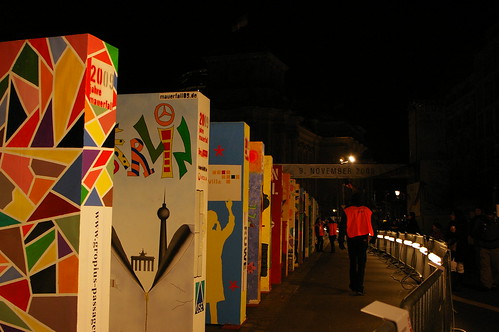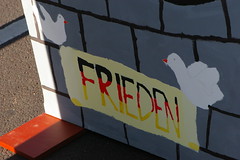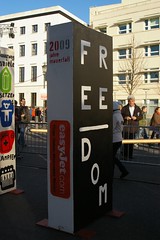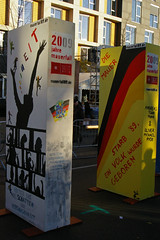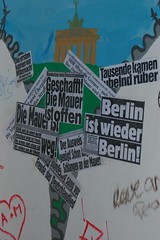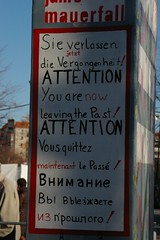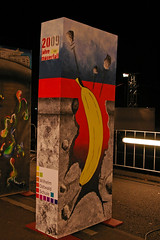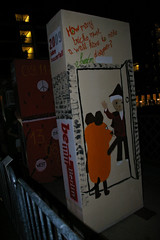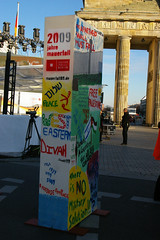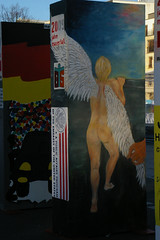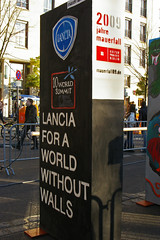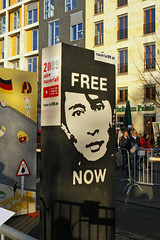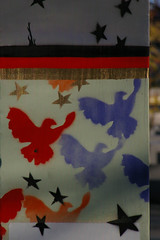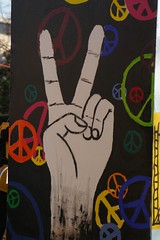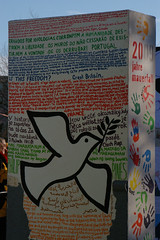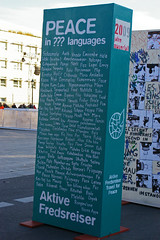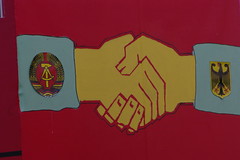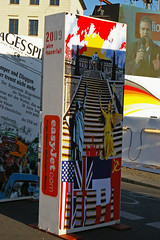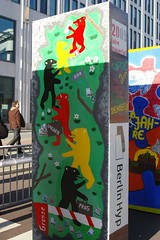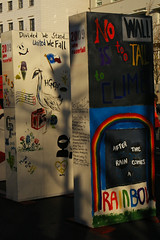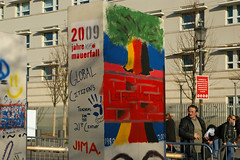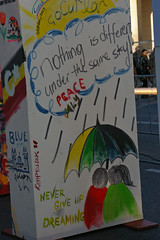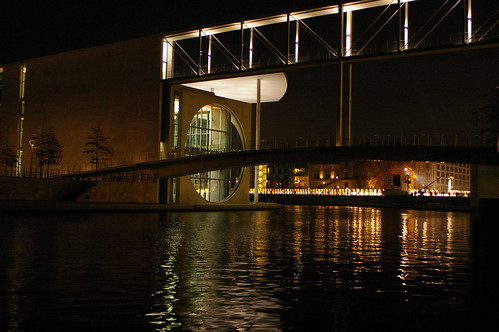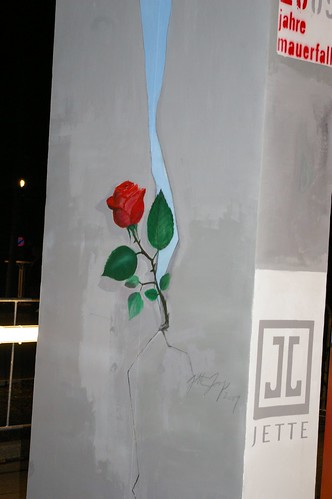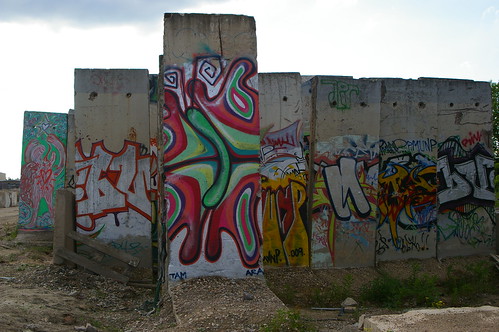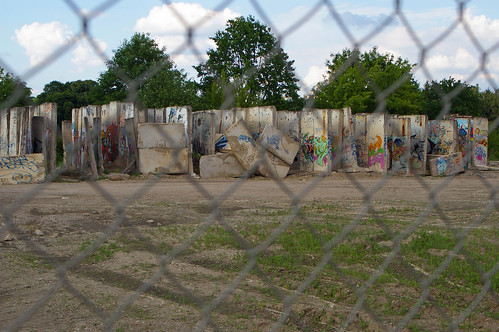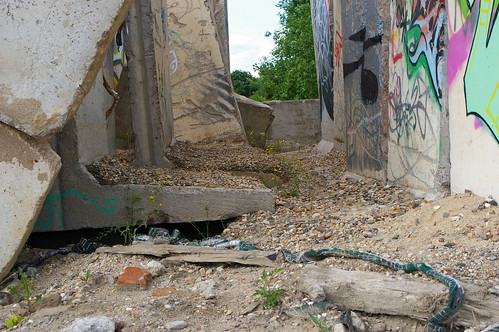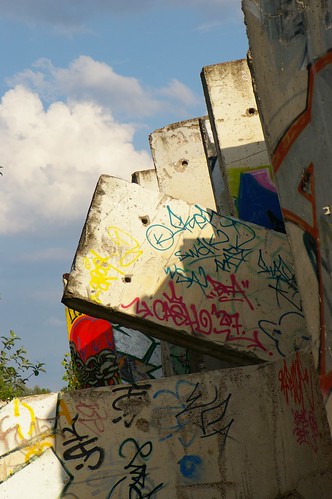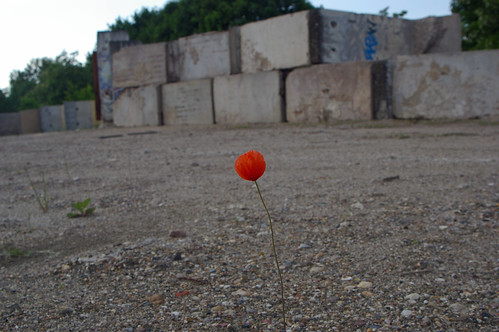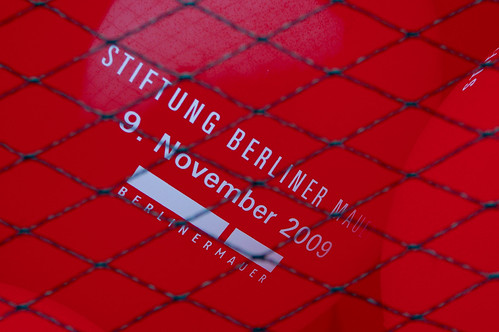
20th anniversary balloon
* This is part of a series on the 20th Anniversary of the fall of the Berlin Wall – and my attempt to document the events of the weekend, where 20 years before, a peaceful revolution brought about a big change which helped to end the cold war, and bring about a new Europe. Many more of the events are in the full flickr set here. *
November 9th was cold and cloudy. When I woke up, it was foggy near my house, and drizzling heavily. The entire day would wind up this way, and let’s just say by the end, I was miserable. The thing is that being who I am, I decided that it was worth it to get out anyhow – despite the miserable weather – and try to document the events on this, the 20th anniversary of the fall of the Berlin Wall.
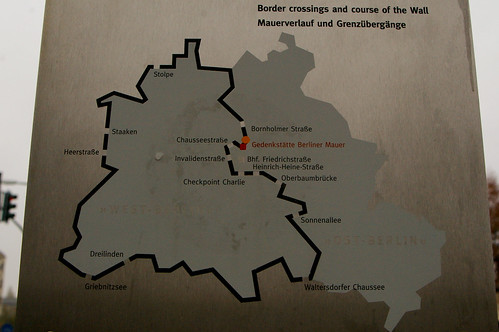
After showering, dressing in 3 layers and my gortex ski jacket, I headed up to Nordbahnhof. The station Nordbahnhof, is a part of what was formerly known as a “ghost station”. What’s a ghost station? Well, in 1961, the grounds around the train station were cleared and transformed into part of the border strip. The station building itself was torn down with only the entrance hall of the original suburban train station left behind – bricks blocking the windows and doors at both the top and bottom of the stairs. The stop “existed” and trans would run through it – but trains from West Berlin rattled past the underground platforms without stopping. Empty for years, after the fall of the Wall, the S-Bahn station Nordbahnhof was re-opened; and now operates as a stop along the S 1, S 2, and S 25 lines. The railway property around it, however, lay unused and inaccessible until around 2006 – when a contest was held by the city of Berlin for what to do with the land along Bernauer Strasse- which is now being developed as a memorial.
I admit that I’d never really been to this section of Berlin before, despite it’s history. When you first get out of the train station, you head to the east, and you see very quickly the effect that the wall had on Bernauer Str. One section has lovely old turn of the section buildings, and the other side is modern architecture apartments. In the middle, is a huge un-developed section, where the former no-man’s land laid, and where many buildings were removed. You can also see many sections of the wall in their former “glory”.
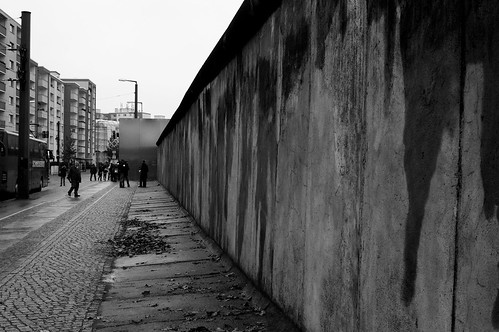
The Remains of the Wall at St. Sophia’s Cemetery – which was partly plowed under to make way for the wall
The first thing you pass is a 60 meter section of the old Berlin Wall (above), with a monument set up in front to one of the people – Ernst Mundt – who at 40 years old decided to try and jump through the section of wall to get to his elderly mother who lived in the west. Bound to end badly, two guards near the Nordbahnhof ghost station promptly shot him several times – once in the head.
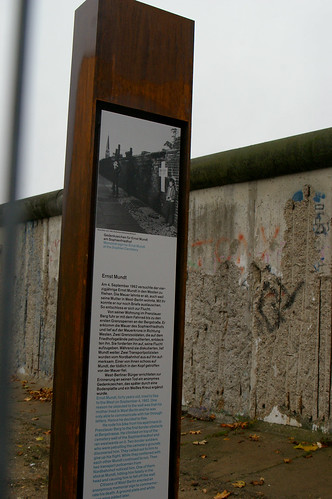
As you continue to walk along, you realize that there used to be buildings here – including the church of the Reunification. Sometime in the 1980s, the church was blown up – with very little pieces of it (the bells from the tower and some of the internal art were saved by parishioners) remaining. After the fall of the wall, the congregation managed to get part of their land back – and built a very simple, smaller church – where the day’s commemoration ceremony was started at 10 am.
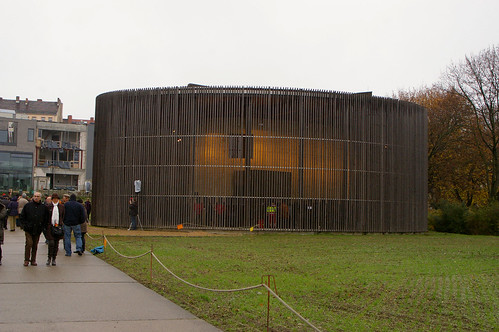
Modern Church of Reunification on Bernauer Str.
As the crowds mulled about, I found it rather interesting to notice the people around me – were mostly ex-patriots. Then, I realized that the church was broadcasting services outside in german at one end, and english at the other. The German area was filled with locals listening and reflecting to the service. Meanwhile, The English area was surrounded by tourist busses and people milling about the documentation put up about the history of the Berlin wall in the area. Getting frustrated, I decided to head up the street – and check out more of Bernauer strasse – where most of the people who actually tried to escape the Berlin Wall died.
I found many memorials with names listed:
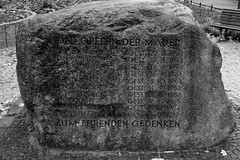
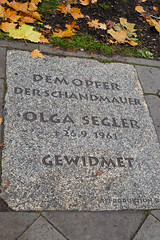
And surprisingly, stories that I had seen the photographs for – which had been burned into my memory – made into statues – stickers, and history blocks along the street (GDR border guard Conrad Schumann Jumping the wall under construction):
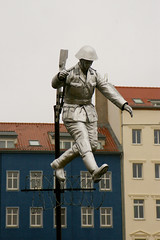

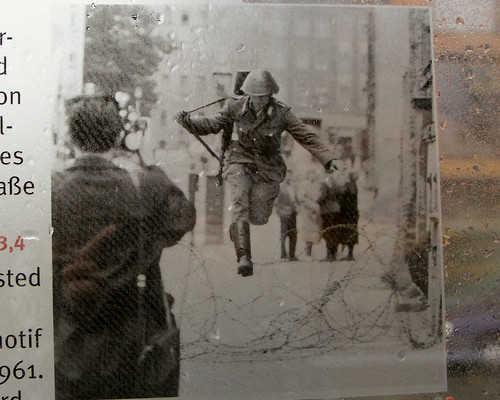
It was then that it really hit home – that yes, the Berlin Wall Really ran here.
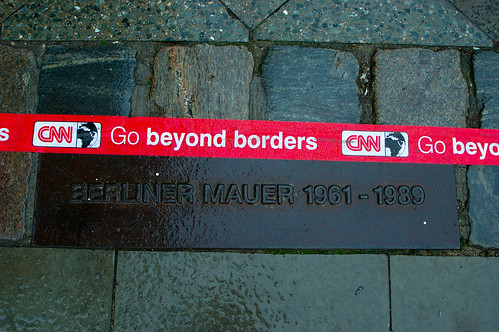
More tomorrow – on the Roses at the wall.



